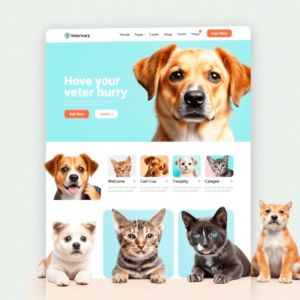Introduction
Selecting the right dog breed is a crucial decision that affects your life and the happiness of your future pet. The ideal breed matches your lifestyle, ensuring a harmonious relationship based on understanding and compatibility.
Choosing a dog breed isn’t just about looks or trends. It directly affects:
- Your daily routine: Energetic breeds like Border Collies require intense exercise, while relaxed breeds like Basset Hounds are satisfied with little activity.
- Living conditions: Bigger dogs usually need more space, while smaller breeds adjust well to apartments.
- Grooming commitments: Some dogs need a lot of grooming, while others are relatively easy to care for.
Key factors to consider when selecting a breed include:
- Activity Level: Assess how active you are and what your daily activities look like.
- Space Availability: Think about how big your home and yard are.
- Temperament: Look for breeds that match your personality and family dynamics.
- Health Issues: Research common health problems associated with certain breeds.
Ready to find your perfect canine companion? Book an appointment with AVI Lead Generation Pets for personalized guidance in selecting the best dog breed for your lifestyle. Your journey to a fulfilling companionship starts here.
Understanding Your Lifestyle
Assessing your daily routine, activity level, and living situation is the cornerstone of selecting the perfect dog breed. The rhythm of your life directly influences which breed will thrive under your care and companionship.
Daily Activities and Energy Levels
- Active Lifestyles: If your day is filled with physical activities—running, hiking, or frequent outdoor adventures—consider breeds like Border Collies or Australian Shepherds. These dogs have high energy levels and will relish an active lifestyle.
- Sedentary Lifestyles: For those with a more relaxed daily routine, breeds such as Bulldogs or Basset Hounds may be ideal. These breeds are content with moderate exercise and lots of downtime.
Living Situation
- Urban Living: Apartment dwellers should consider smaller breeds like French Bulldogs or Dachshunds. These dogs adapt well to confined spaces and urban environments.
- Suburban/Rural Living: Larger homes with expansive yards can accommodate bigger breeds like Golden Retrievers or German Shepherds. These dogs benefit from ample space to roam and play.
Understanding these elements ensures you select a breed that not only fits seamlessly into your life but also thrives in it. The alignment between your lifestyle and your dog’s natural instincts creates a harmonious relationship, enriching both your lives in the process.
Size and Space Considerations
When selecting the perfect dog breed, the size of your living space plays a pivotal role. Different breeds have varying spatial needs, and understanding this can help ensure both you and your future pet live comfortably.
Evaluating Your Living Space
Consider the dimensions of your home. Smaller breeds like Chihuahuas or French Bulldogs adapt well to apartment living due to their compact size and lower activity levels. Conversely, larger breeds such as Great Danes or Saint Bernards require more room to move around freely. A cramped environment can lead to stress and behavioral issues for bigger dogs.
The Importance of Yard Size for Larger Breeds
A yard provides an essential outlet for physical activity, especially for high-energy breeds. Border Collies, German Shepherds, and other active dogs thrive when they have ample outdoor space to run and play. If your home includes a spacious yard, these breeds will benefit significantly from the extra room to expend their energy.
- Small Spaces: Ideal for breeds like Pugs, Dachshunds, and Toy Poodles.
- Medium Spaces: Suitable for Beagles, Cocker Spaniels, and Bulldogs.
- Large Spaces: Best for Golden Retrievers, Huskies, and Labradors.
Understanding these spatial needs is crucial in making an informed decision. Whether you live in a cozy studio or a sprawling estate, there is a breed that fits perfectly into your lifestyle.
Grooming Needs
Selecting a dog breed involves evaluating grooming requirements, a crucial factor that can significantly impact your daily routine. Different breeds exhibit diverse grooming needs, largely influenced by their coat type, size, and shedding patterns.
Differences in Grooming Needs Among Breeds
- Long-haired Breeds: These dogs often require frequent brushing to prevent matting and tangling. Breeds like the Afghan Hound or Shih Tzu demand regular grooming sessions.
- Short-haired Breeds: Easier to manage with less frequent grooming. Examples include the Beagle and Boxer, both of which benefit from occasional brushing to remove loose hair and dirt.
- Double-coated Breeds: Dogs such as the Siberian Husky or Golden Retriever have an undercoat and topcoat, necessitating seasonal grooming to manage shedding.
High-Maintenance vs. Low-Maintenance Options
- High-Maintenance Breeds:
- Poodles: Known for their hypoallergenic coats, Poodles require regular professional grooming every 4-6 weeks to maintain their curly fur.
- Cocker Spaniels: Their flowing coats demand frequent brushing and trimming to keep them free from knots and debris.
- Low-Maintenance Breeds:
- Beagles: With short hair, Beagles are easier to care for. Regular brushing once a week suffices to keep their coat clean.
- Dachshunds: Another example of low-maintenance dogs; minimal grooming is needed due to their short coat.
Understanding these differences helps ensure that you choose a breed aligned with your capacity for meeting its grooming needs. This choice directly influences the time you’ll spend on maintenance and the overall health of your pet’s skin and coat.
Evaluating Temperament and Trainability
Understanding dog temperaments and needs is crucial for a harmonious relationship between you and your pet. The dog’s temperament significantly influences compatibility with your lifestyle and family dynamics.
1. Gentle Breeds for Families
Labrador Retrievers and Golden Retrievers stand out as prime examples of gentle breeds. Their friendly nature, patience with children, and eagerness to please make them ideal for families, including those with young kids.
2. Dogs for First-Time Owners
Novice dog owners benefit from choosing breeds known for their manageable temperaments. Breeds such as Cavalier King Charles Spaniels and Yorkshire Terriers are not only affectionate but also relatively easy to train, making the transition into pet ownership smoother.
3. Trainability Factors
Trainability is a key consideration. Breeds like Border Collies and Poodles are highly intelligent and responsive to training commands, making them easier to manage. Conversely, some breeds might exhibit stubborn streaks or require more patience during training sessions.
Selecting a breed that aligns with your experience level and lifestyle ensures a fulfilling partnership. This attention to temperament and trainability can lead to a well-adjusted, obedient companion that thrives in your home environment.
Health Considerations and Breed-Specific Issues
When choosing the right dog breed, it’s important to think about health. Each breed has its own possible health problems, so it’s crucial to be knowledgeable.
Common Health Issues by Breed
Some breeds are more likely to have certain health issues. For example:
- Rottweilers: Often face joint problems like hip dysplasia and are prone to heart issues.
- Bulldogs: Known for respiratory problems due to their flat faces, also susceptible to skin infections.
- German Shepherds: Frequently suffer from hip dysplasia and degenerative myelopathy.
- Golden Retrievers: Commonly affected by cancer and heart diseases.
Knowing about these common health issues specific to each breed can help you make a better decision and get ready for any future veterinary needs.
Benefits of Mixed-Breed Dogs
Mixed-breed dogs have several advantages when it comes to health:
- Genetic Diversity: Mixed-breeds benefit from a broader genetic pool, which often reduces the likelihood of inherited health problems seen in purebreds.
- Fewer Health Issues: They tend to have fewer genetic disorders compared to their purebred counterparts.
- Longevity: Many mixed-breed dogs enjoy longer lifespans due to their robust genetic makeup.
Choosing a mixed-breed dog can be a great option, providing not only a one-of-a-kind companion but also potentially lower healthcare expenses in the future.
Understanding these health factors helps you choose a dog breed that fits your lifestyle and prepares you for any specific challenges related to that breed.
Rescue, Adoption Options, and Socialization Needs
Keywords: rescue dogs, adopting from shelters
Benefits of Adopting from Shelters
Choosing to adopt rescue dogs from shelters presents numerous advantages:
- Cost-Effective: Adoption fees are generally lower than the price of purchasing a dog from breeders.
- Saving Lives: By adopting, you provide a second chance for animals in need, reducing the number of euthanized pets.
- Health and Behavior Assessments: Many shelters conduct thorough health checks and behavioral assessments on their animals, ensuring you get a healthy and well-adjusted pet.
Importance of Socialization in Choosing a Breed
Socialization is crucial in developing a dog’s behavior and compatibility with different environments:
- Early Socialization: Dogs exposed to various stimuli early in life tend to be more adaptable and well-behaved. Breeds known for their sociable nature, like Boxers or Boston Terriers, often thrive in family settings.
- Continued Interaction: Even after adoption, continuous socialization with people, other pets, and diverse environments will help maintain a balanced temperament.
Selecting a breed that aligns with your lifestyle and social dynamics ensures a harmonious relationship between you and your new furry companion. By considering rescue options and emphasizing socialization, you pave the way for a rewarding experience.
For those seeking personalized guidance on selecting the perfect dog breed tailored to your unique lifestyle, book an appointment with AVI Lead Generation Pets today.








